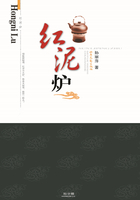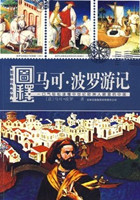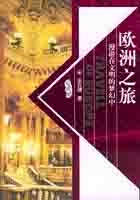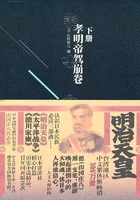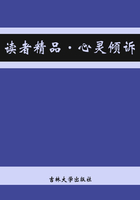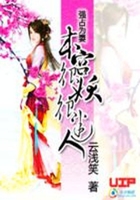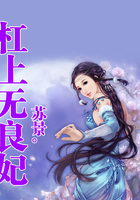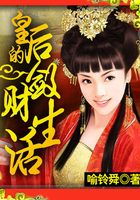佛教作为世界公认的三大宗教之一,自两汉之时传入中国后,迅速地深入中国社会生活的各个领域,并与儒、道文化一起,成为中国传统文化的主流。本篇介绍的内容有佛教创始者、佛教基本教义、佛教能够在中国扎根的原因、佛教的基本特点以及人们在寺庙里常见的部分佛像的故事。
1.佛教创始者是谁?
Who was the founder of Buddhism?
Buddhism was founded in India around the 16th century
B. C. It is said that the founder was Sakyamuni (释迦牟尼). Sakya was the name of the clan to which his family belonged. Sakyamuni was born a prince. His kingdom covered an area that is today in southern Nepal in the Himalayan (喜马拉雅山) foothills and the prince was brought up in luxury. But in his 20s, he became discontented with the world. Every day he encountered suffering-poverty in a beggar, pain in the cries of a woman in childbirth, sickness and death in the form of a corpse. Around the age of 30, in spite of his father’s attempts to keep him within the palace, the prince made his break from the material world and plunged off in search of enlightenment, leaving behind his wife and young son.
Sakyamuni began studying Hindu philosophy and Yoga. Then he joined a band of ascetics and he entered upon a period of rigorous fasting. However, no matter how he held his breath until his head burst and starved his body until his ribs jutted out, he failed to achieve enlightenment himself. He came to feel that self-inflected suffering was not the way to the answer he sought. Finally, Sakyamuni followed the principle of the middle way in which he would live between the extremities of asceticism on one hand and indulgence on the other. As the story goes, he devoted the final phase of his search for enlightenment to meditation and mystic contemplation. One evening, as he sat beneath a fig tree, he slipped into deep meditation. His experience was rewarded for he achieved enlightenment and became Buddha. Afterwards Sakyamuni expressed his new insight in sermons, and his disciples were said soon to have gathered around him.
Notes:1)clan家族;2)luxury奢华;3)discontented不满的;4)encounter遭遇;5)corpse尸体;6)plunge投(入);7)starve挨饿;8)rigorous苛刻的;9)fast斋戒;10)jut使突出;11)self-inflected自使蒙受;12)extremity极度;13)asceticism禁欲主义;14)indulgence沉溺;15)fig无花果;16)sermon布道
2.佛教基本教义是什么?
What are the basic teachings of Buddhism?
Sakyamuni founded an order of monks and for the next 45 years or so preached his ideas until his death around 480 B.C.. The basic teachings of Buddhism are summed up in The Four Noble Truths (四谛): life is suffering (苦); the cause of suffering is desire (集); the answer is to quench desire (灭); the way to this end is to follow The Eight-Fold Path (八正道). This path consists of right knowledge, right aspiration, right speech, right behavior, right livelihood, right effort, right mindfulness and right absorption. By following The Eight-Fold Path, Buddhist followers aim to attain Nirvana, a condition beyond the limits of the mind, feelings, thoughts, the will and ecstasy. Buddhist teaching includes the concept of reincarnation, the circle of rebirth and the law of cause and effort.
Monastic orders for men and women center their practice on The Three Precious Treasures (三宝): the Buddha (佛), the Dharma (法, Law or Way) and the Bonze (僧, the Monastic Order).
Notes:1)quench抑制;2)aspiration志向;3)mindfulness留心;4)absorption吸收;5)nirvana极乐世界;6)reincarnation转世;7)monastic修道院的
3.什么是大乘佛教和小乘佛教?
What are Mahayana and Hinayana?
Buddhism was prevalent in India for about 1,800 years between the 6th century B. C. and 12th century A. D.. Buddhism early in its history came to take two directions: The High Seat (上座部) and The Masses (大众部). The former continued the traditional teachings of Buddhism, and the latter stood for reforms. Between the 1st and 2nd centuries A. D., Indian Buddhism split again into major schools: Mahayana (大乘, Greater Vehicle) and Hinayana (小乘, Lesser Vehicle). Mahayana Buddhism holds that the fate of an individual is linked to the fate of all others. The Buddha doesn’t float off into his own Nirvana, leaving other people behind. He not only shows people the way to their Nirvana, but also continues to exude spiritual help to those seeking Nirvana. On the other hand, Hinayana holds that the path to Nirvana is an individual pursuit. People who seek Nirvana must tread its path on their own.
Notes:1)prevalent流行的;2)exude渗出
4.佛教何时传入中国?
When did Buddhism enter China?
Buddhism made its entry into China very slowly and it entered the south of China by sea and the north by land.
High-Seat Buddhism was even divided as the southward and northward dissemination sections. The southward section first entered Southeast Asia, and about 7th century it entered Yunnan, China, via Burma. Propagated in Bali language family, it gradually became the primary form of Chinese Buddhism. Up to the present time, this form is still prevalent as Hinayana or Theravada Buddhism (小乘, Lesser Vehicle) in regions inhabited by Tai nationality.
About the 2th century, when Mahayana Buddhism was in its middle stage in India, it entered Central China, inhabited by the Han nationality. There is a tradition that Han Emperor Ming Di (汉明帝), in response to a dream, sent to India for Buddhist images and scriptures. It is said that he had these scriptures translated into Chinese at Luoyang (洛阳). About 65 A. D., he invited two Indian monks to China, and he even established a monastery in the suburbs of Luoyang. At this stage, however, Buddhism in China was confined to a few believers at court.
About the 7th century, Buddhism entered Tibet from both central China and India. Since the 11th century, another prevalent form of Buddhism in India entered Tibet in a big way. Since that time, the evolution of Buddhism in China followed two major forms, one in the Chinese language family, and the other in the Tibetan language family.
Notes:1)dissemination宣传;2)inhabited有居民的
5.佛教在唐代是怎样发展的?
How did Buddhism develop in Tang Dynasty?


